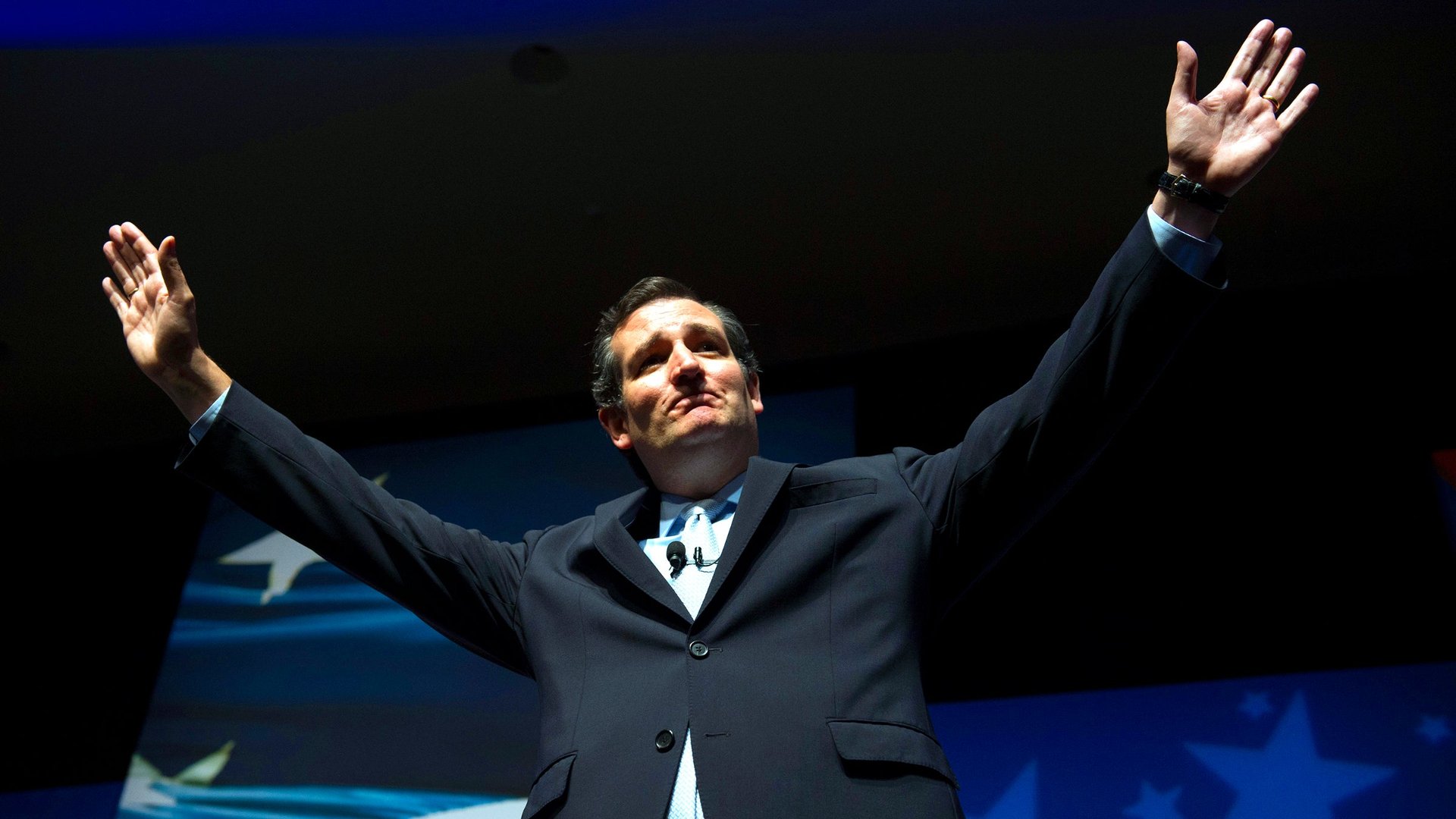These days, running for US president means riding with Uber—and on that count, Ted Cruz has the lead
In just the first half of 2015, US political campaigns spent more money on Uber rides—$124,880—than they did in the entirety of 2014, a year with actual voting, and one in which we saw the controversial car service trounce taxis among the political class.


In just the first half of 2015, US political campaigns spent more money on Uber rides—$124,880—than they did in the entirety of 2014, a year with actual voting, and one in which we saw the controversial car service trounce taxis among the political class.
A Quartz analysis of 2015 campaign finance data provided by the Sunlight Foundation shows that, among the top 10 Republican candidates and top three Democratic candidates, Texas senator Ted Cruz’s presidential campaign reports the most Uber use of any campaign. But add in the spending by Super PACs, essentially shadow campaigns that can raise unlimited amounts to help candidates, and two of Florida’s favorite sons—former governor Jeb Bush and current senator Marco Rubio—outspend the rest of the field by a significant margin.
Uber is easy to politicize. Its clashes with local transit regulators in major cities like New York and San Francisco, its eye-popping valuation, its hiring of former Obama aide David Plouffe, and CEO Travis Kalanick’s libertarian leanings have put the firm on the map for both parties. (See Democratic candidate Hillary Clinton’s criticism of the “gig economy” epitomized by Uber and other employers of contract workers. See also the massive reaction her comments triggered in the media, and the way Bush played it all off with a well-publicized Uber ride in San Francisco.)
Voters, however, are unlikely to make their decision next year based on a candidate’s stance on an car-service app. One political operative who requested anonymity to speak blames the politicization of Uber on urban reporters who are themselves obsessed with the service.
But if nothing else, the campaign data shows that Uber is increasingly taking over the transit world. Political campaigns are themselves a particularly lean brand of startup, aiming to launch a viable candidate who can corner the market, or least just over 50% of it. (And then, like many startups, they’ll shut down after 18 months or so.) In any case, if they’re choosing Uber over other transit alternatives, you have to think that some combination of cost, convenience, and efficacy must be attracting them.